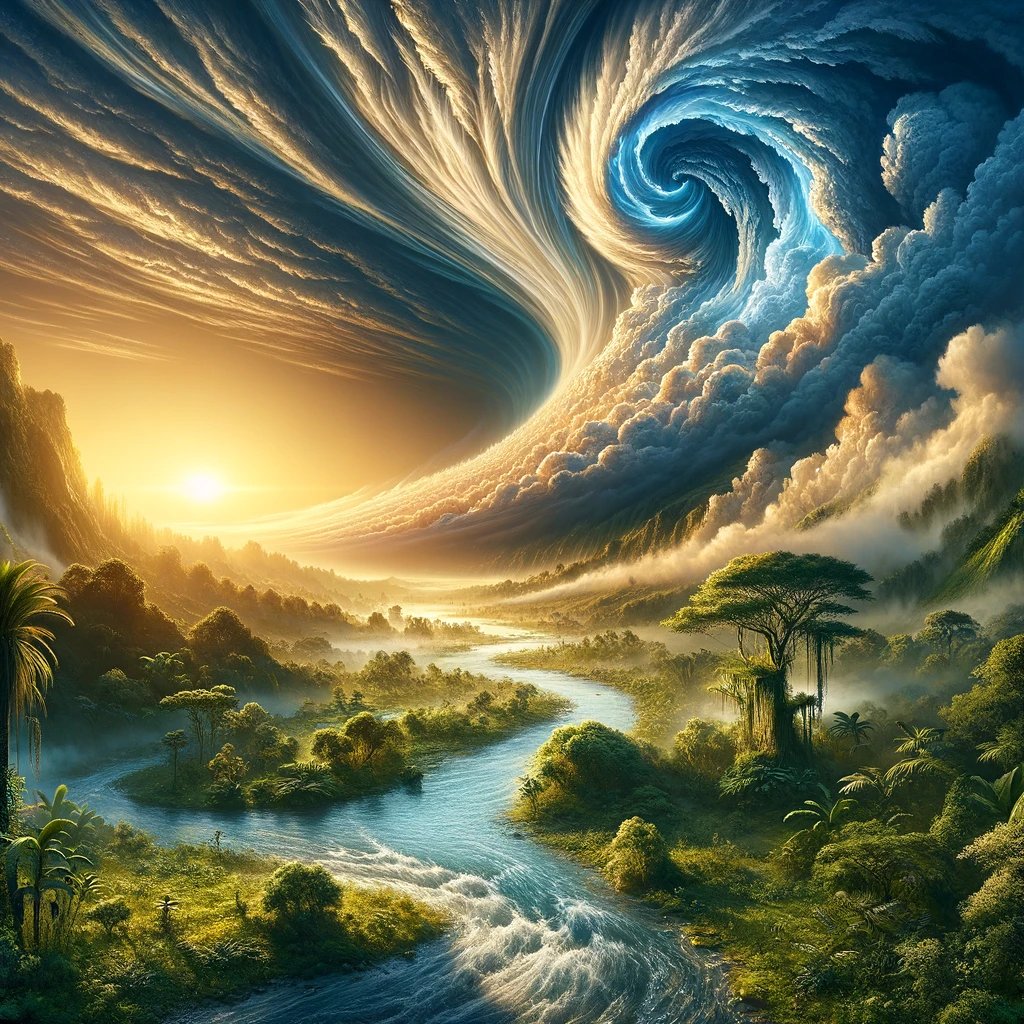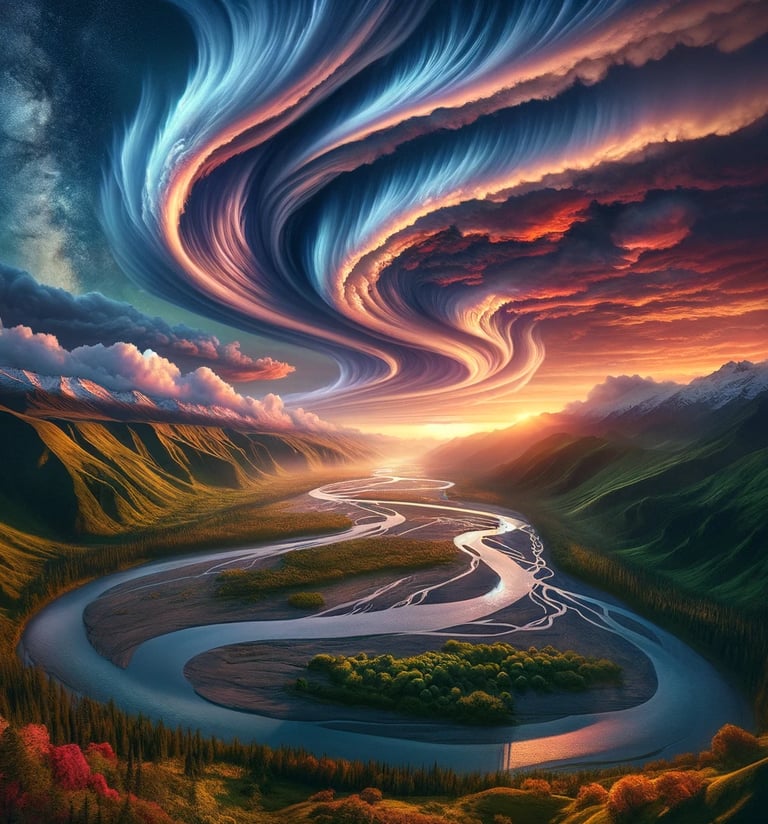Atmospheric Rivers vs. Terrestrial Rivers: Understanding Their Impact on Climate and Civilization
Institute of the Happy Planet
2/6/20243 min read


Who We Are:
Economic Nations champions global unity through economic collaboration, focusing on sustainable growth, reducing inequalities, and enhancing global relationships for mutual prosperity and peace.




Embark on a voyage through the skies, where rivers invisible to the naked eye wield the power to both quench and ravage the lands beneath. These are not the rivers of lore that meander through our valleys and plains, but
atmospheric rivers, ethereal in nature, yet palpable in their impact.
In this narrative, we juxtapose these skyborne rivers with their terrestrial cousins, exploring their destinies entwined with human fate, through a lens that magnifies their beauty, power, and the paradox they embody.
Imagine, if you will, an atmospheric river, a titan among the clouds, traversing thousands of miles across the open sky. It is a marvel of the natural world, born from the warm embrace of tropical waters, gathering its might from the evaporated whispers of the ocean. This river in the sky is a conveyor belt of moisture, invisible highways curating clouds, dictating weather patterns, and scripting the tales of rainfall and snow across continents. Its terrestrial equivalent, the river of water, carves the earth, nurturing civilizations, and crafting landscapes over eons. Both rivers, in essence, are lifeblood, yet their narratives diverge under the human gaze.
Consider the Pineapple Express, an atmospheric river famed for its journey from the Hawaiian waters to the shores of California. It is a bearer of gifts, delivering rain to parched lands and filling reservoirs to the brim. Yet, its bounty often turns belligerent, transforming into floods that uproot communities and landscapes. Herein lies the paradox - the same waters that breathe life into the earth can also summon chaos.
Terrestrial rivers, in their serenity and rage, mirror this duality. They are cradles of human civilization, channels of commerce, and sanctuaries of biodiversity. Yet, when swollen with rain, they can breach their bounds, leaving devastation in their wake. This duality is exacerbated by human action - climate change, deforestation, and urban sprawl, intensifying the extremities of both atmospheric and terrestrial rivers.


In this narrative of duality, there's a call for stewardship. It beckons us to recognize our role in this saga, where every act of emission and exploitation reverberates through the arteries of our planet. The fate of these rivers, one veiled in the clouds, the other etched into the earth, is a testament to our interconnectedness with nature.
Imagine a future where harmony prevails, where human ingenuity aligns with the rhythms of the earth. In this world, atmospheric rivers no longer spell catastrophe, but are revered for their life-sustaining bounty. Terrestrial rivers flourish, their waters clear, their banks verdant. This vision is within our grasp, but it requires a collective awakening to the impact of our actions and a commitment to change.
This narrative is not merely an exploration of atmospheric and terrestrial rivers; it is a reflection on human potential, a call to action, and a homage to the intricate beauty of our planet. It challenges us to envision a world where the rivers in the sky and on land are not harbingers of doom but symbols of hope. Through imagination, empathy, and science, we can rewrite the destiny of these rivers, ensuring they remain the lifeblood of our planet, nurturing not just the earth, but the very soul of humanity.
(With AI Input)
Contacts
enquiry@economicnations.org
(xx) 98-11-937-xxx (On verification)
